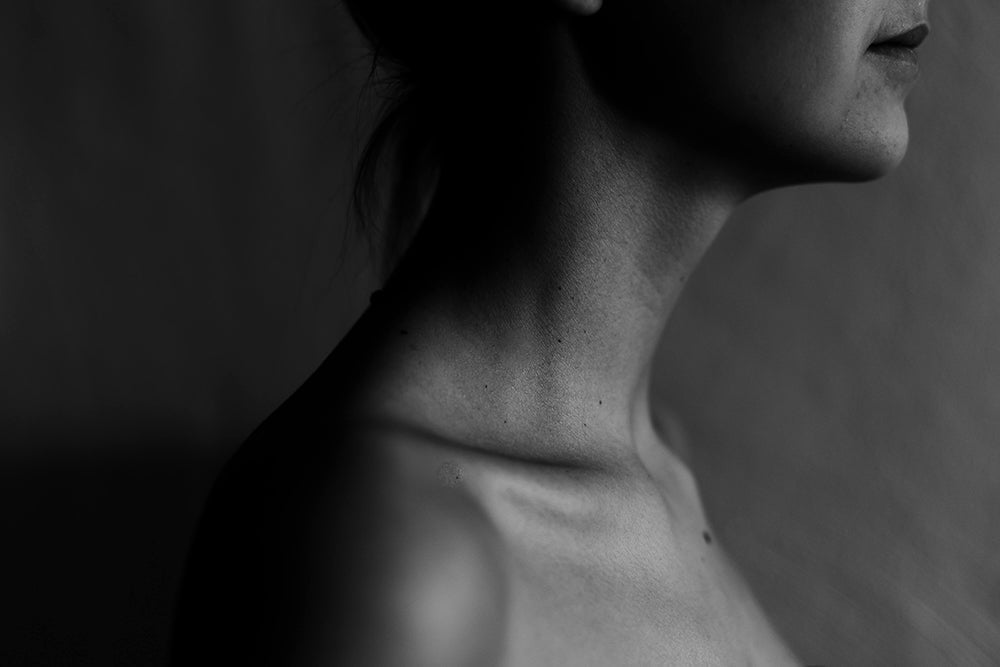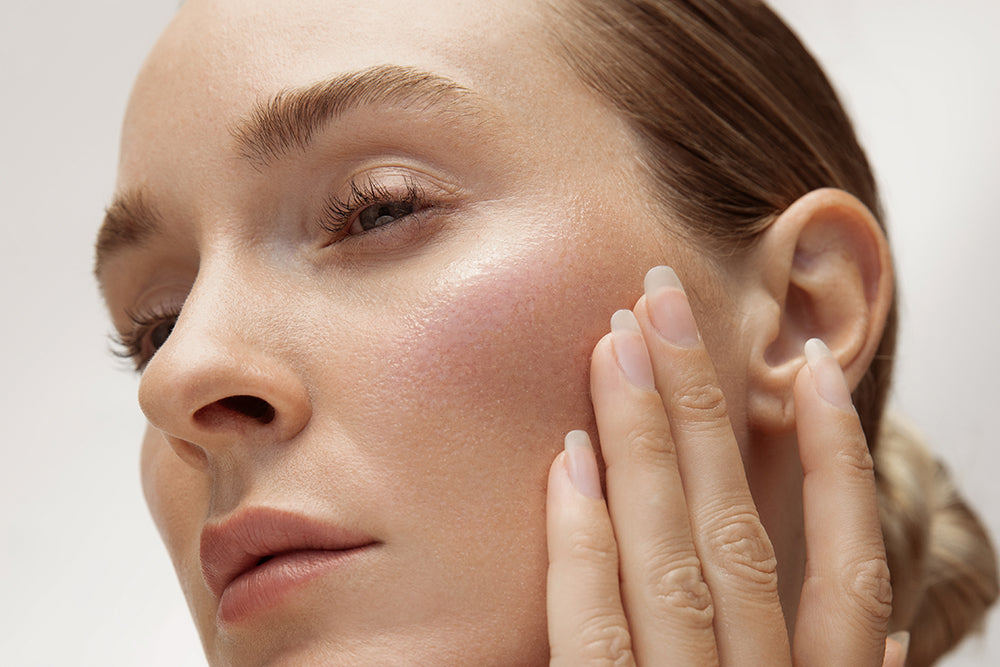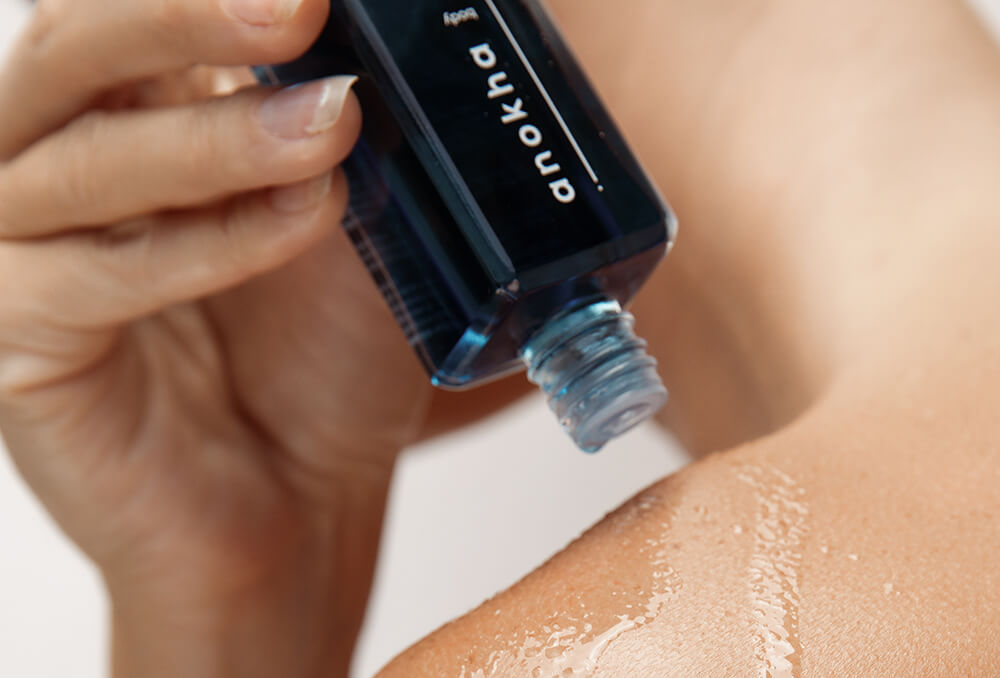
lymphatic massage and drainage

the bottom line
it’s all the rage – facial massage and lymphatic drainage. while we admit to having our fair share of facial rollers and devices on our shelves, we wanted to explore how and why this old-time remedy works, and why it’s making such a comeback among the beauty and wellness crowd. keep rolling and read on.
first layer: the history
Lymphatic massage is the practice of massaging the skin manually to stimulate the circulation of the immune system, helping to remove waste and toxins from the body. The technique of Manual Lymphatic Drainage (MLD) was initially developed in the 1930’s by Danish scientist Dr. Emil Vodder as a gentle technique to promote the flow of lymphatic fluid. The goal is to use light touch with slow and rhythmic motions to first stimulate the lymph nodes, following the lymphatic pathway to drive excess fluid into the vessels and then to the appropriate lymph nodes for clearance from the body. Dr. Vodder’s theory and technique are still widely regarded as the definitive guides in lymphatic drainage. But why perform lymphatic massage in the first place, and how does this help the skin? Let’s dig in a little deeper.
second layer: the science
First, let’s briefly discuss the lymphatic system, that remarkable network of organs, lymph nodes, ducts, and vessels that plays an essential role in our immune system. Lymph, or lymphatic fluid, is a whitish liquid that carries toxins in the body to the lymph nodes for filtration. Lymphatic vessels make up a fine network that runs in parallel to our veins and carry lymph from tissues to the lymph nodes.
The lymphatic system helps to rid the body of the lymph-obligatory load, which consists of proteins, long-chain fatty acids, cells and cell debris, and water. This system also helps to remove viruses and bacteria. Once this load has been processed and cleansed, the lymphatic fluid is transported back into the venous system.
Our bodies possess both primary and secondary lymphoid organs. The primary lymphoid organs include the bone marrow and the thymus. Both produce lymphocytes, or white blood cells, which help to mount an immune response to exogenous invaders. The spleen, tonsils, and lymph nodes are considered to be secondary lymphoid organs. Lymphocytes travel to these organs to help defend the body against foreign invaders. Lymph nodes are located in specific regions of the body, such as the axillary (armpits), cervical (neck), and preauricular (in front of the ear). Each nodal region drains a specific part of the body by filtering out the waste carried to it.
third layer: the benefits
While there are a number of reported benefits of lymphatic massage and drainage, there is a paucity of data to support all of these claims.
- Reduces swelling: Lymphatic massage and drainage have repeatedly been shown in medical settings to reduce both acute and chronic swelling following disease or surgery. It is a standard part of post-procedure care for many plastic surgery procedures of both the face and body.
- Improves radiance: we’ve noted that regular lymphatic drainage helps to promote blood flow, providing radiance from increased circulation.
- Reduces skin aging: while this claim may be debatable, a study conducted by Shiseido linked poor lymphatic drainage to sagging skin associated with skin aging.
- Purifies the skin: the data is somewhat lacking here as well, but regular lymphatic massage of the face appears to help reduce acne breakouts.
fourth layer: the technique
Lymphatic massage can be performed in the morning or the evening. While morning massage helps to reduce swelling that can occur during the night, evening massage can be extremely relaxing and aid in falling asleep more easily.
Begin with clean and dry skin – save the oils for a bit later. Use the pads of your fingers to gently stimulate the tissues. Start with the neck, move up to the jawline and chin, then to the mouth, nose, and eyes. Finish at the glabella (the region between the eyebrows) and the forehead. Keep your movements upwards and out from the middle of the face to the lymph nodes around the ears and on the neck.
Lymphatic massage should be avoided if you have a history of circulatory problems, congestive heart failure, blood clots, or an active infection. Active acne lesions should also never be massaged given the risk of spreading bacteria on your face.
fifth layer: the tools
There are more than a few ways and tools available for lymphatic massage and drainage. Here are a few of the most popular:
- manual massage: lymphatic massage can easily be performed with your hands alone. Make sure to use gentle pressure only.
- dry brushing: dry brushing with a firm but soft brush can be used to stimulate lymphatic drainage. Remember to stroke towards the heart.
- gua sha: while facial gua sha has been promoted as a lymphatic drainage technique and does in fact assist with lymphatic circulation, it is primarily meant to unblock obstructed blood and qi (energy). Regular practitioners report reduced facial swelling, improved skin texture, decreased acne, and more defined facial features.
- jade rollers: these are gorgeous and feel wonderful on the skin, but make sure you’re using your roller correctly by moving the fluid in the correct direction. Simply moving the roller back and forth over your skin probably won’t have much benefit.
sixth layer: how we do it
We don’t sell rollers, gua sha stones, dry brushes, or any of those goodies. Instead, we think that your own two hands are still one of the most effective and nurturing tools that you possess for every layer of your skincare routine.
All this and more at www.anokhaskincare.com .
xx
anokha
references:
- https://www.absolution-cosmetics.com
- https://www.blogs.reneerouleau.com
- https://www.healthline.com/health/lymphatic-drainage-face
- https://www.newbeauty.com
- Wittlinger H, Wittlinger D, Wittlinger A, Wittlinger M. Vodder’s Manual Lymphatic Drainage. Stuttgart: Thieme; 2019.
- https://corp.shiseido.com/en/releimg/2455-e.pdf
faq's:
what is facial lymphatic drainage?
facial lymphatic drainage is the practice of massaging the skin manually to stimulate the circulation of the immune system, helping to remove waste and toxins from the face.



leave us a comment
This site is protected by hCaptcha and the hCaptcha Privacy Policy and Terms of Service apply.